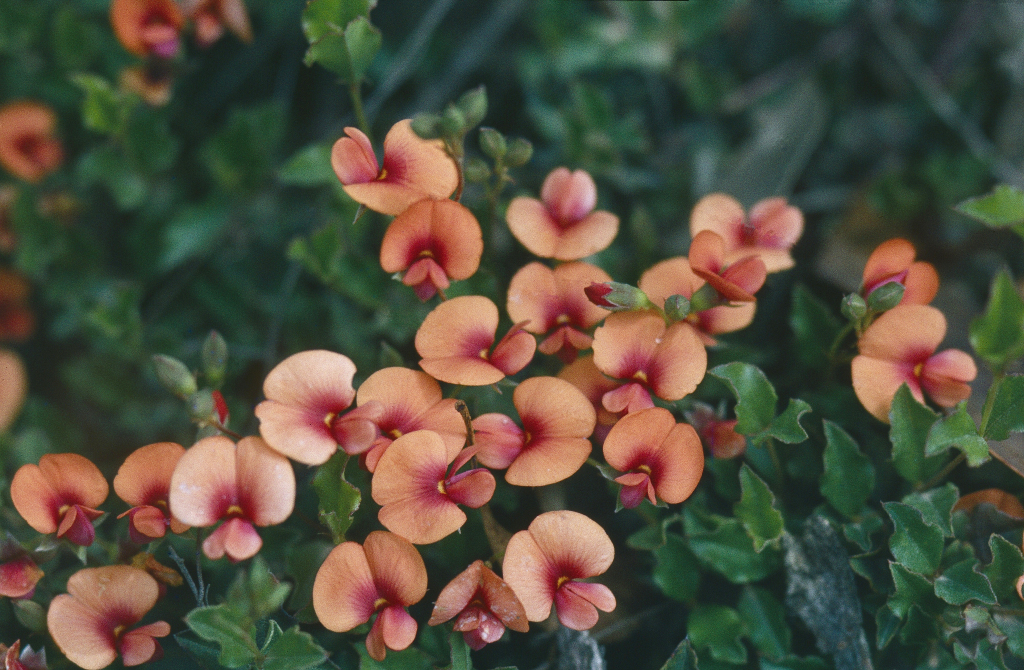Podolobium
Perennial prostrate to medium shrubs; stems mostly pubescent, hairs peltate. Leaves alternate, opposite or whorled, simple, entire or lobed, upper surface reticulate and shiny, margins flat or recurved, shortly petiolate; stipules rigid, recurved or spreading. Inflorescences axillary or terminal racemes; flowers pedunculate; bracts trilobed, sometimes caducous; bracteoles present or absent. Calyx 5-toothed, teeth recurved at anthesis, more or less equal, upper 2 wider and fused higher up; petals clawed, yellow, orange or reddish; standard suborbicular, emarginate, longer than wings and keel; wings oblong or obovate; keel straight or slightly curved, broad and obtuse; stamens free, anthers uniform; ovary stipitate, style filiform or thickened near base, stigma small, terminal, ovules 2 or more. Pod ovoid or obloid with warty ridges, stalked, turgid, lacking septa or subseptate between seeds, pubescent, villous or glabrous, valves leathery; seeds 2–several, reniform, black or dark brown, and exarillate (in Victoria).
6 species, all endemic to Australia and found in the eastern mainland States.
Cladistic studies on the polymorphic genus Oxylobium (Stirton 1987) have revealed the presence of a number of groups of taxa most suitably treated as distinct genera. The 3 species can be distinguished from species in Oxylobium s. str. by their peltate hairs, trilobed bracts, rigid stipules that are usually recurved or spreading, calyx lobes that are recurved at anthesis and warty ridges on the pods.
Jeanes, J.A. (1996). Fabaceae. In: Walsh, N.G.; Entwisle, T.J., Flora of Victoria Vol. 3, Dicotyledons Winteraceae to Myrtaceae, pp. 663–829. Inkata Press, Melbourne.
 Spinning
Spinning